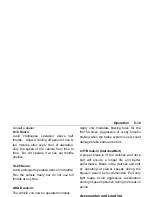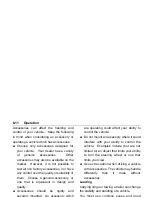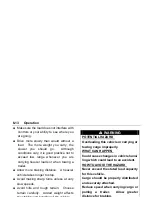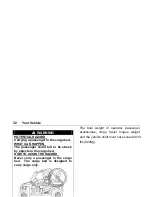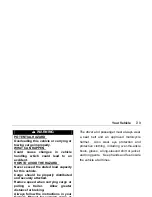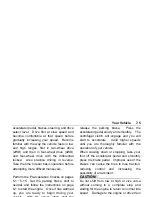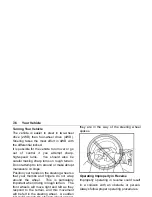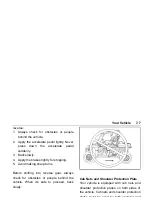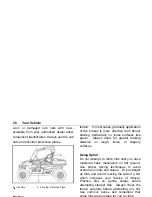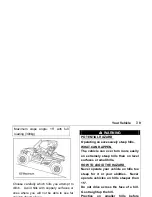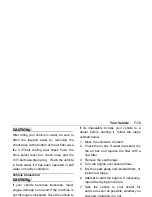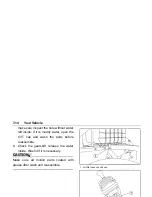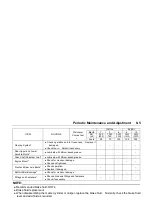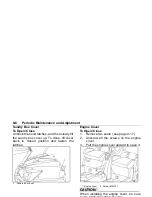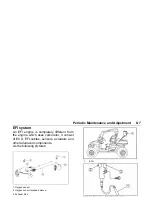
7-10 Your Vehicle
Before climbing the hill, first be sure you are
operating in low range 4WD or, if necessary,
with 4WD. To climb a hill, you need traction,
momentum, and steady throttle. Travel fast
enough to keep your momentum going, but
not so fast that you cannot react to changes
in the terrain as you climb. Slow down
when you reach the crest of the hill if you
cannot clearly see what is on the other side.
There could be another person, an obstacle,
or a sharp drop off.
If you start to lose traction or momentum
when climbing, and you decide you will be
unable to continue, use the brakes to come
to a stop. Do not attempt to turn the vehicle
around. With your foot on the brake, look
behind you and plan your descent. Shift the
drive select lever in reverse so you can use
the engine brake if necessary to slow your
descent. Release the brake and begin to
coast down the hill. Use engine braking as
much as possible, gently applying the brakes
when necessary.
Going Downhill
Check the terrain carefully before going
down a hill. When possible, choose a path
that lets you drive your vehicle straight
downhill. Avoid sharp angles that could
allow the vehicle to pitch or roll over.
Carefully choose your path and drive no
faster than you will be able to react to
obstacles that may appear.
Summary of Contents for HS800UTV
Page 1: ...STRIKE 800 OWNER S MANUAL hisunmotors com TM...
Page 9: ...Location of the Warning and Safety Labels 1 1...
Page 11: ...Location of the Warning and Safety Labels 1 3...
Page 12: ...1 4 Location of the Warning and Safety Labels...
Page 13: ...Location of the Warning and Safety Labels 1 5...
Page 14: ...1 6 Location of the Warning and Safety Labels...
Page 174: ...Owner Manual...


